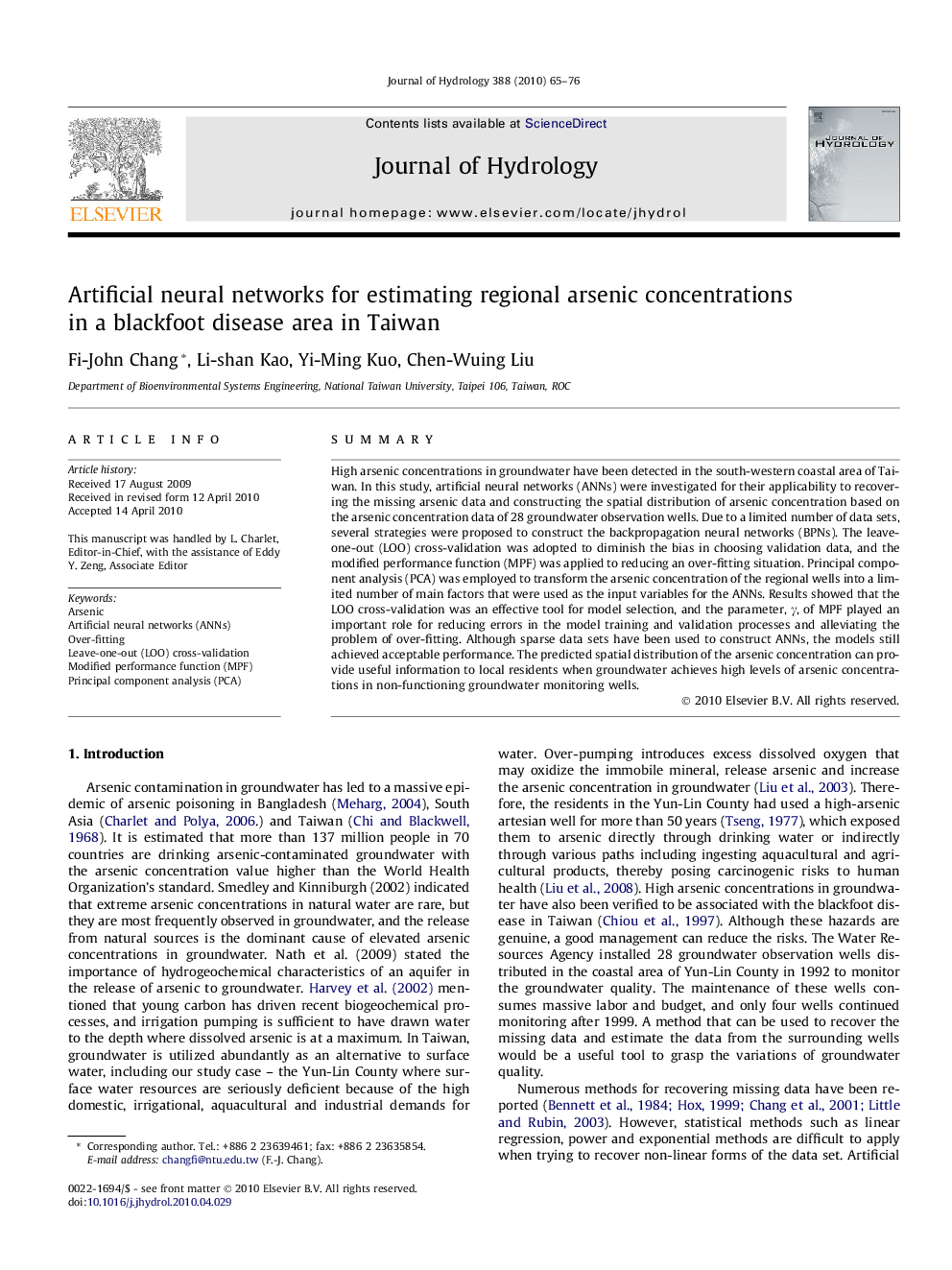| Article ID | Journal | Published Year | Pages | File Type |
|---|---|---|---|---|
| 4578232 | Journal of Hydrology | 2010 | 12 Pages |
SummaryHigh arsenic concentrations in groundwater have been detected in the south-western coastal area of Taiwan. In this study, artificial neural networks (ANNs) were investigated for their applicability to recovering the missing arsenic data and constructing the spatial distribution of arsenic concentration based on the arsenic concentration data of 28 groundwater observation wells. Due to a limited number of data sets, several strategies were proposed to construct the backpropagation neural networks (BPNs). The leave-one-out (LOO) cross-validation was adopted to diminish the bias in choosing validation data, and the modified performance function (MPF) was applied to reducing an over-fitting situation. Principal component analysis (PCA) was employed to transform the arsenic concentration of the regional wells into a limited number of main factors that were used as the input variables for the ANNs. Results showed that the LOO cross-validation was an effective tool for model selection, and the parameter, γ, of MPF played an important role for reducing errors in the model training and validation processes and alleviating the problem of over-fitting. Although sparse data sets have been used to construct ANNs, the models still achieved acceptable performance. The predicted spatial distribution of the arsenic concentration can provide useful information to local residents when groundwater achieves high levels of arsenic concentrations in non-functioning groundwater monitoring wells.
